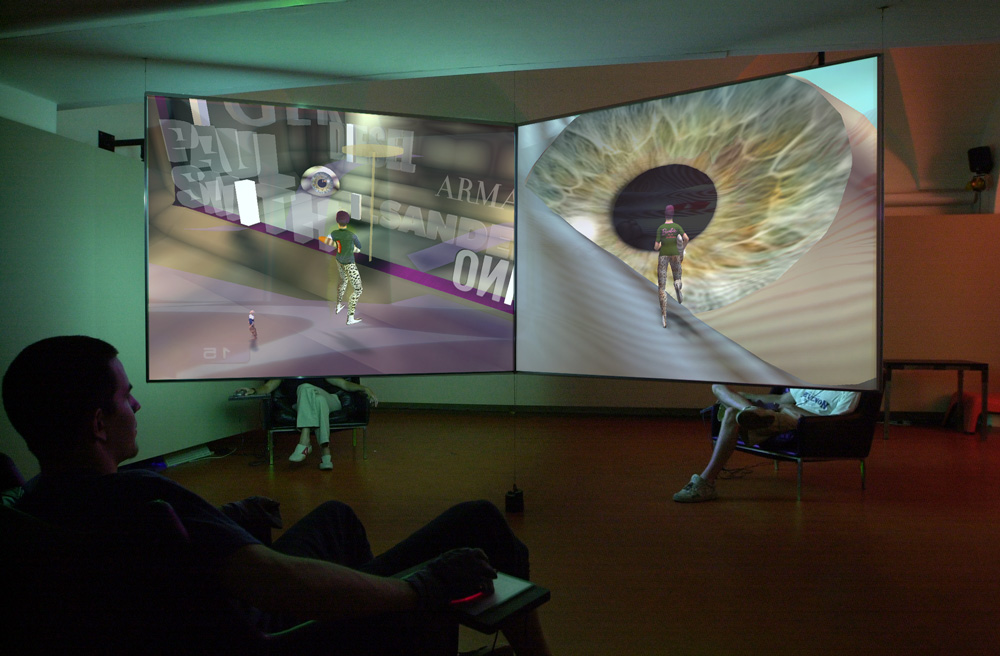fluID arena of identities
When players first enter the game, they lack any distinguishing features. The objective of the game is to forge an individual identity by exploring the virtual terrains Narciss Lake, The Laboratory of Style, The Hall of Mirrors and The Factory of Reproduction. Gameplay becomes a process through which one defines the concept of identity.
The Cartesian notion that existence is founded by the presence of an unchanging, innate 'I' is undermined by the transient, ever-changing nature of the player‘s identity in the game. Like real life, from one moment to the next, identity is forming, eroding, renewing. Unpredictable identity breaks within the game cause moments of crisis which indicate the transience of contemporary identity. The SkinGun affords players the ability to steal elements of one another‘s identity.
Our mediated existence is a central aspect of fluID. That this mediation exists through shared experiences forged within mass media contexts is represented by fluID‘s Laboratory of Style. Here players may succomb to the temptation of an easily constructed identity - one which mimics advertising‘s cultural cliches. However, winning identities are dependent on individuality.
FluID is rooted in psychology and psycho-analysis, perhaps more so than any other game. Obsessions with self-identity can reach dangerous levels where, in Narciss‘ Lake, players may be so captivated by their own identity that they fall victim to offensive advances by other players. The degree to which our perception of self identity is built upon visions we have of ourselves is weighed against the importance of other‘s perceptions of us. The quotients of the concept of identity fluctuate between first-person perspective; second-person fragments of one‘s own avatar stolen by other characters; and third person reflections across avatarial clones and classic distorted reflections The Hall Of Mirrors. Here, the mediated quality of computer based play reflects aspects of our relationship to game avatars; ie. the proximity of these identities to that of our own, ‚real‘, physical sense of self.
Mathias Fuchs' theoretical accompaniment to the game discusses digital interactivity as a more complex Lacanian mirror than can be found previously in film and literature. He outlines the complex relationship between game players and their onscreen avatars - whereby an identification of self with the abstracted, surreal game-based characters can, through the persuasive nature of the computer game, forge a false self-identity which marks a more truthful pattern of identity construction in modern life.








